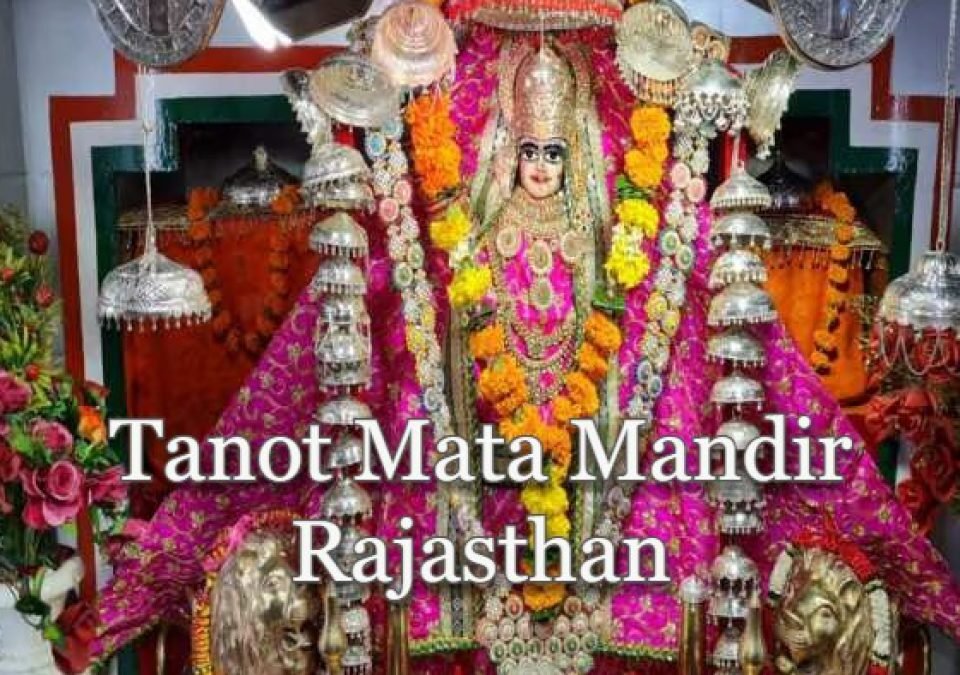Kuldhara Village: The Untold Tale of a Forgotten Era

Golden Fort of Jaisalmer: Timings, History, and Why It’s India’s Only Living Fort
July 10, 2025
Patwon Ki Haveli Jaisalmer – A Journey Through Art and Time
July 19, 2025Nestled on the fringes of the Thar Desert lies a haunting vestige of a bygone era: Kuldhara village. Far from the bustling lanes of modern Rajasthan, Kuldhara village remains frozen in time, its crumbling walls and empty lanes echoing stories of valor, intrigue, and abandonment. Today, tourists flock to this ghostly settlement to glimpse the past, marvel at the silence, and ponder the mystery that shrouds Kuldhara village Jaisalmer. Often included in heritage tours and combined with thrilling adventure activities in jaisalmer, such as dune bashing or desert safaris, a visit to Kuldhara offers a unique blend of mystery and excitement. In this comprehensive exploration, we delve into every aspect of Kuldhara village—its origins, architecture, legends, and modern significance—painting a vivid portrait of Jaisalmer village life as it once was.

Origins of kuldhara village
The story of kuldhara village begins in the late 18th century, during the zenith of the Jaisalmer kingdom. Established by Paliwal Brahmins—an enterprising community known for agriculture and irrigation—kuldhara village jaisalmer thrived on a delicate network of wells and canals that transformed the arid landscape into fertile farmland. The Paliwal settlers engineered ingenious water channels, channeling seasonal rains to sustain crops and orchards, embedding kuldhara village in the agrarian prosperity of the region.
Geographical Setting of kuldhara village jaisalmer
Perched about 18 kilometers from the heart of Jaisalmer village, kuldhara village occupies a strategic location between shifting sand dunes and hard-packed desert plains. This position offered both advantages and vulnerabilities: while the elevation protected the settlement from seasonal floods, the encroaching sands of the Thar posed constant threats. Over centuries, the desert reclaimed large swaths of farmland, evidencing nature’s inexorable push against human endeavor.
Architecture and Layout of jaisalmer village’s kuldhara village
Walking through Kuldhara village in Jaisalmer today, visitors encounter the remains of over 1,500 homes arranged in a grid-like pattern. The uniform design speaks to thoughtful urban planning. Each house featured thick sandstone walls—harvested from nearby quarries—and flat roofs built to catch scarce monsoon rains. Narrow lanes wove between the dwellings, linking communal wells and small shrines dedicated to local deities. The robust construction of kuldhara village allowed it to withstand centuries of arid winds, even as the population dwindled.
The Great Exodus: Legend of jaisalmer village’s abandonment
The most enduring legend of kuldhara village revolves around the sudden exodus of its inhabitants. According to local lore, in 1825, Salim Singh—the powerful minister of Jaisalmer—demanded exorbitant taxes from the Paliwal community. When the villagers resisted, Salim Singh is said to have unleashed his men to seize their lands. On a moonlit night, every household in kuldhara village jaisalmer is believed to have packed their belongings and silently fled, leaving behind pets, grain, and even cooking fires still burning. By dawn, kuldhara village stood empty, its residents dispersing to neighboring towns and villages.
Historical Evidence Behind the kuldhara village Jaisalmer Tale
While the dramatic tales of a single night’s flight capture the imagination, historians point to more gradual factors contributing to the abandonment of kuldhara village. Prolonged droughts in the early 19th century decimated crop yields. Combined with oppressive taxation by Jaisalmer’s court, the Paliwal farmers faced untenable hardships. Over a decade, families migrated in waves, eventually emptying the settlement. Archaeological surveys confirm the desiccation of wells and the erosion of once-thriving fields, lending credence to both legend and environmental reality.

Folklore and Haunted Reputations of kuldhara village
In the decades following its abandonment, kuldhara village jaisalmer garnered a reputation as Rajasthan’s most haunted site. Ghost stories proliferated: locals claimed to hear the distant clang of temple bells at midnight, phantom drum beats along deserted lanes, and anguished wails echoing among the dunes. Paranormal enthusiasts often camp within the ruined homes of kuldhara village, hoping to record spectral phenomena. Whether one believes in ghosts or not, the atmospheric stillness and undisturbed sands impart an otherworldly aura to the ruined jaisalmer village.
Cultural Significance and Local Traditions
Despite its ghostly fame, kuldhara village remains integral to jaisalmer village’s cultural tapestry. Every year during the monsoon, local communities organize “Kuldhara Mela,” a fair celebrating the village’s heritage. Folk artists, musicians, and storytellers gather to reenact the legends of the Paliwal exodus. Handicraft stalls line pathways leading to the ruins, offering embroidered textiles, pottery, and miniature sandstone carvings inspired by kuldhara village architecture.
Visiting kuldhara village: Practical Guide
For travelers intrigued by Kuldhara village Jaisalmer, planning is straightforward. The site lies approximately a 30-minute drive from Jaisalmer village town center. Visitors can hire a taxi or join guided tours that include sunset camel safaris across the nearby dunes—a perfect way to witness kuldhara village at dusk, when the golden hues of sandstone glow against the twilight sky. Entrance is typically free, though modest fees support conservation efforts.
Culinary Experiences Near kuldhara village jaisalmer
After exploring the silent lanes of kuldhara village, visitors often seek the vibrant flavors of jaisalmer village cuisine. Nearby dhabas serve piping-hot bajra roti, tangy ker sangri, and rich dal bati churma. Some tour operators include traditional Rajasthani thali lunches, featuring bajre ki khichdi and laal maas, paired with cooling buttermilk. Sampling local delicacies enhances the immersive experience of kuldhara village’s cultural context.

Conclusion
Kuldhara village stands as a silent testament to human resilience, environmental challenge, and the passage of time. Its empty homes speak volumes about a forgotten era in Jaisalmer village history, inviting us to reflect on the impermanence of civilization. Whether you’re drawn by ghostly legends, architectural wonder, or cultural heritage, Kuldhara village offers an unforgettable journey through Rajasthan’s soul. Many visitors often combine their exploration of this eerie site with a stay at the best desert camp in Jaisalmer, making the experience even more immersive and memorable. As you tread its sandy lanes, remember the voices of those who once thrived here—and ensure that the untold tale of Kuldhara village endures for generations to come.
FAQS
What is Kuldhara Village famous for?
Kuldhara Village is famous for being an abandoned village near Jaisalmer, Rajasthan, shrouded in mystery and legends. It is believed to have been deserted overnight in the 19th century, and locals say it’s haunted.
Where is Kuldhara Village located?
Kuldhara Village is located about 18 kilometers west of Jaisalmer city in the state of Rajasthan, India. It lies in the heart of the Thar Desert and is a popular tourist site near Jaisalmer village.
Why was Kuldhara Village abandoned?
According to legend, the villagers left Kuldhara overnight to escape the unjust demands of a powerful minister from Jaisalmer. Historical reasons may also include water scarcity and high taxes.
Is Kuldhara Village really haunted?
While there’s no scientific evidence of paranormal activity, many locals and visitors believe Kuldhara Village is haunted. The eerie silence and abandoned homes add to its haunted reputation.
Who originally lived in Kuldhara Village?
Kuldhara Village was established by the Paliwal Brahmins, a prosperous and intelligent community known for their knowledge of water management and agriculture in the Jaisalmer region.
Can tourists visit Kuldhara Village today?
Yes, tourists can visit Kuldhara Village near Jaisalmer. It is maintained as a heritage site and attracts history buffs, photographers, and those curious about Rajasthan’s ghost villages.




